This post may contain affiliate links. Please read our disclosure policy.
If you’ve tried pozole rojo or pozole verde, you’ll love this pozole blanco! Made with a simple and flavorful broth, tender pork shoulder, hominy, and topped with cabbage, lime, radishes, and a dash of salsa, this authentic dish is packed with traditional Mexican flavors.
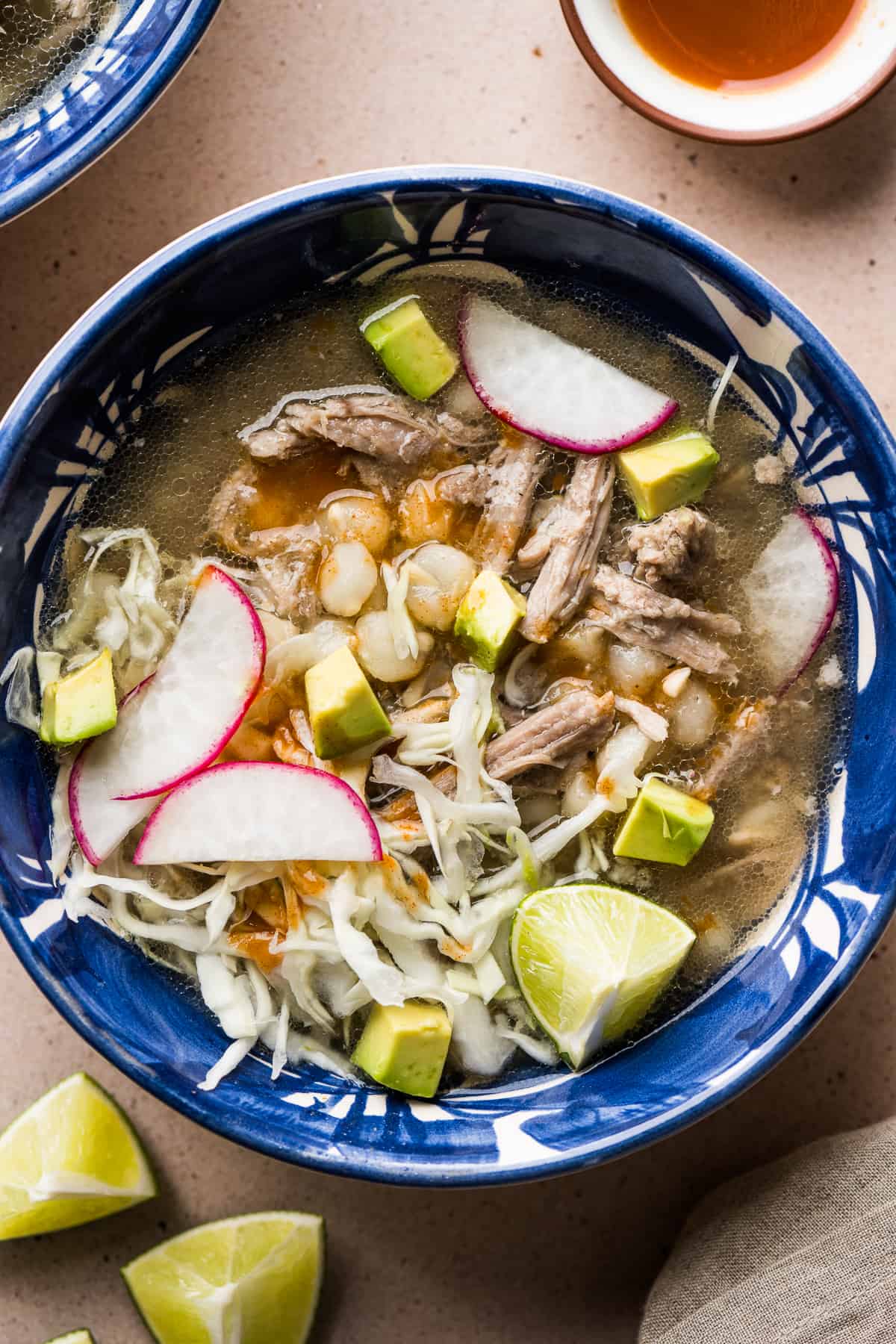
[ez-toc]
What is Pozole Blanco?
Pozole blanco is a traditional Mexican soup made from hominy that’s simmered with meat, typically pork or chicken, in a flavorful broth made with onions, garlic, and a blend of spices. It is not made with any chiles like other pozoles.
It’s often served with a variety of toppings and accompaniments like:
- Cabbage
- Lime juice
- Radishes
- Onions
- Avocado
- A dash of your favorite salsa
There are also other popular variations of pozole, including pozole rojo and pozole verde, with the main difference being their broth. Each pozole broth is flavored with different kinds of chiles, whereas pozole blanco gets its flavor from just the tender pork shoulder and other seasonings. All three are equally delicious and highlight traditional Mexican flavors and ingredients!
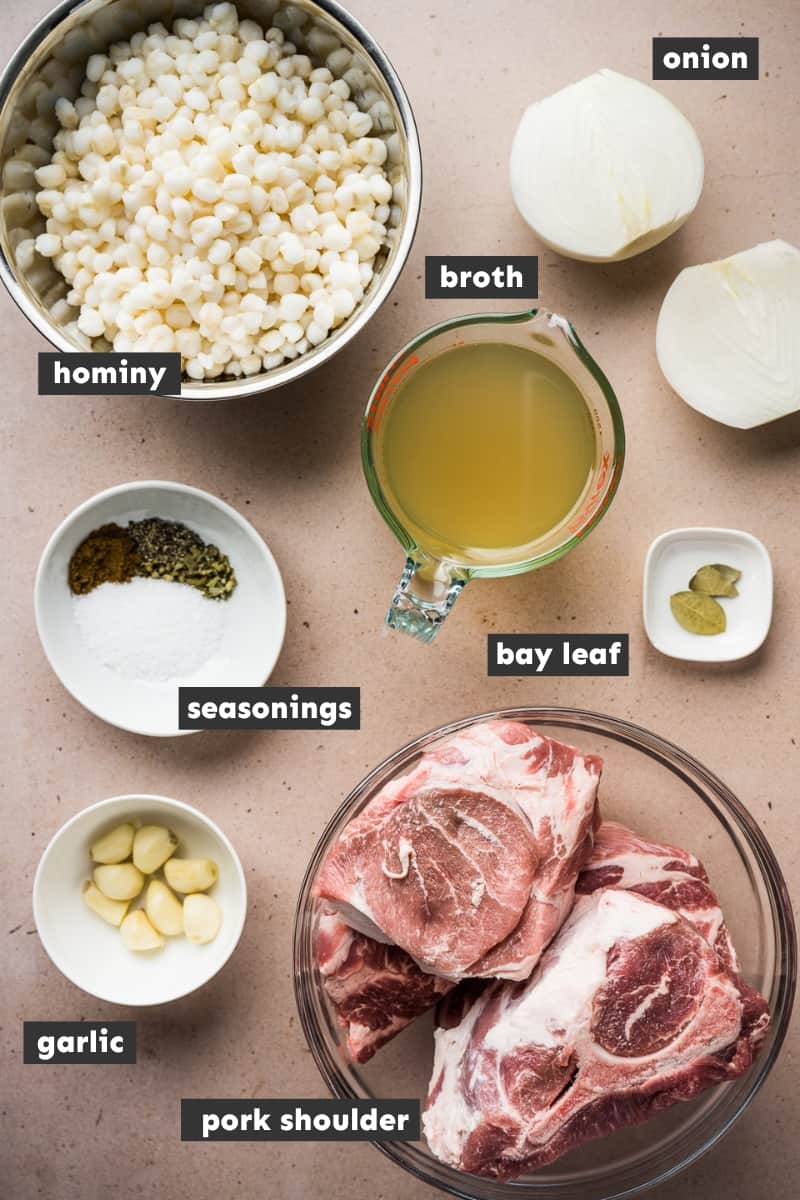
Ingredients in Pozole Blanco
Pork shoulder: I recommend using pork shoulder because of its fat content. Since it’s cooked slowly, it releases lots of juices making for a more flavorful broth and tender pork. If you prefer chicken, I recommend using bone-in chicken thighs for the best flavor. Keep in mind that the cooking time will be a lot shorter.
Hominy: I used white hominy, but you can also use yellow.
Bay leaves: These add a subtle herbal and earthy flavor to the broth.
Onions and garlic: A must-have for extra flavorful broth.
Seasonings: I used a mix of kosher salt, cumin, black pepper, and Mexican oregano. I would recommend using Mexican oregano since it has a stronger flavor and a hint of citrus, but you can also use regular oregano.
Broth: I used chicken broth for this recipe, but you can also use beef or vegetable based on your preference.
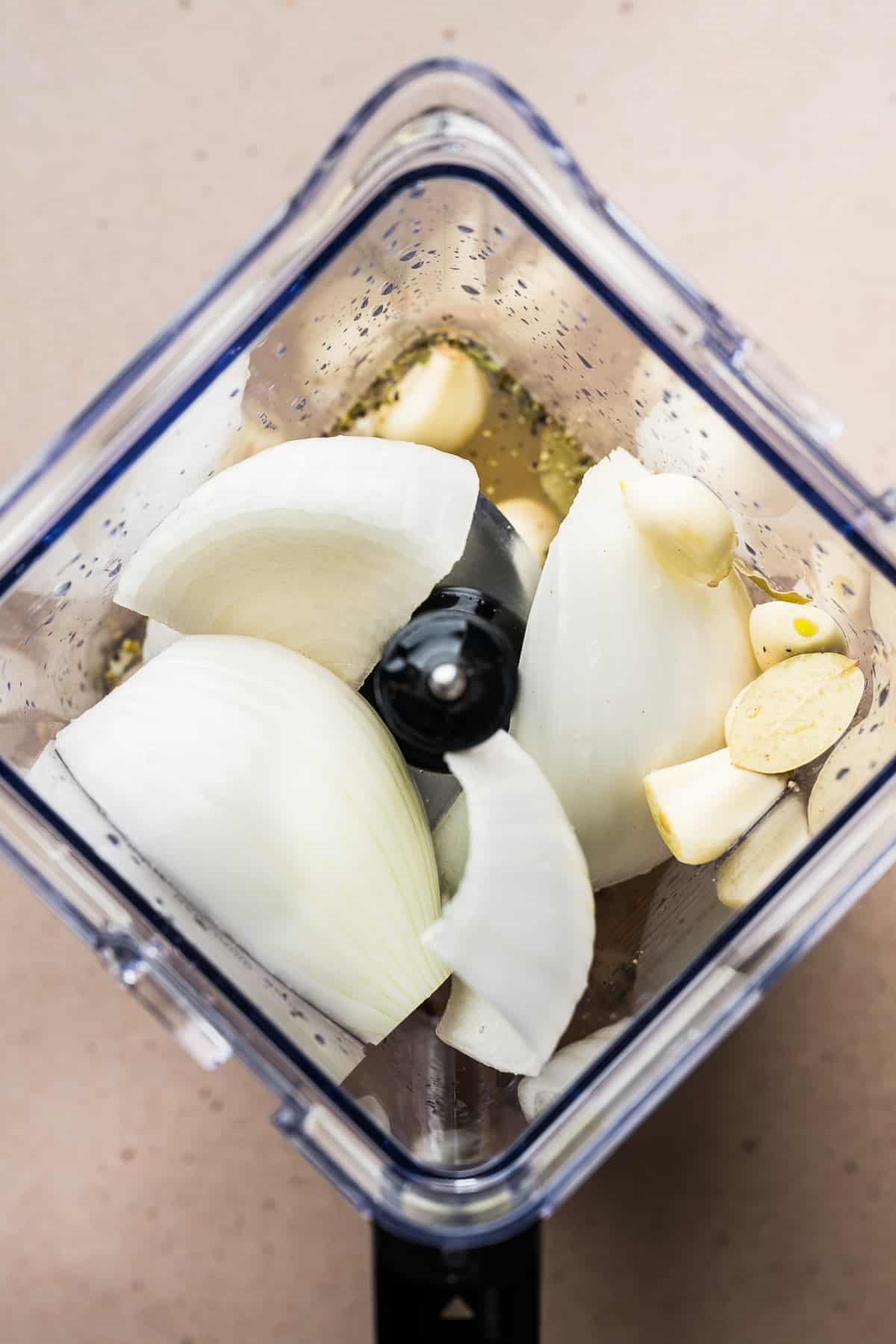
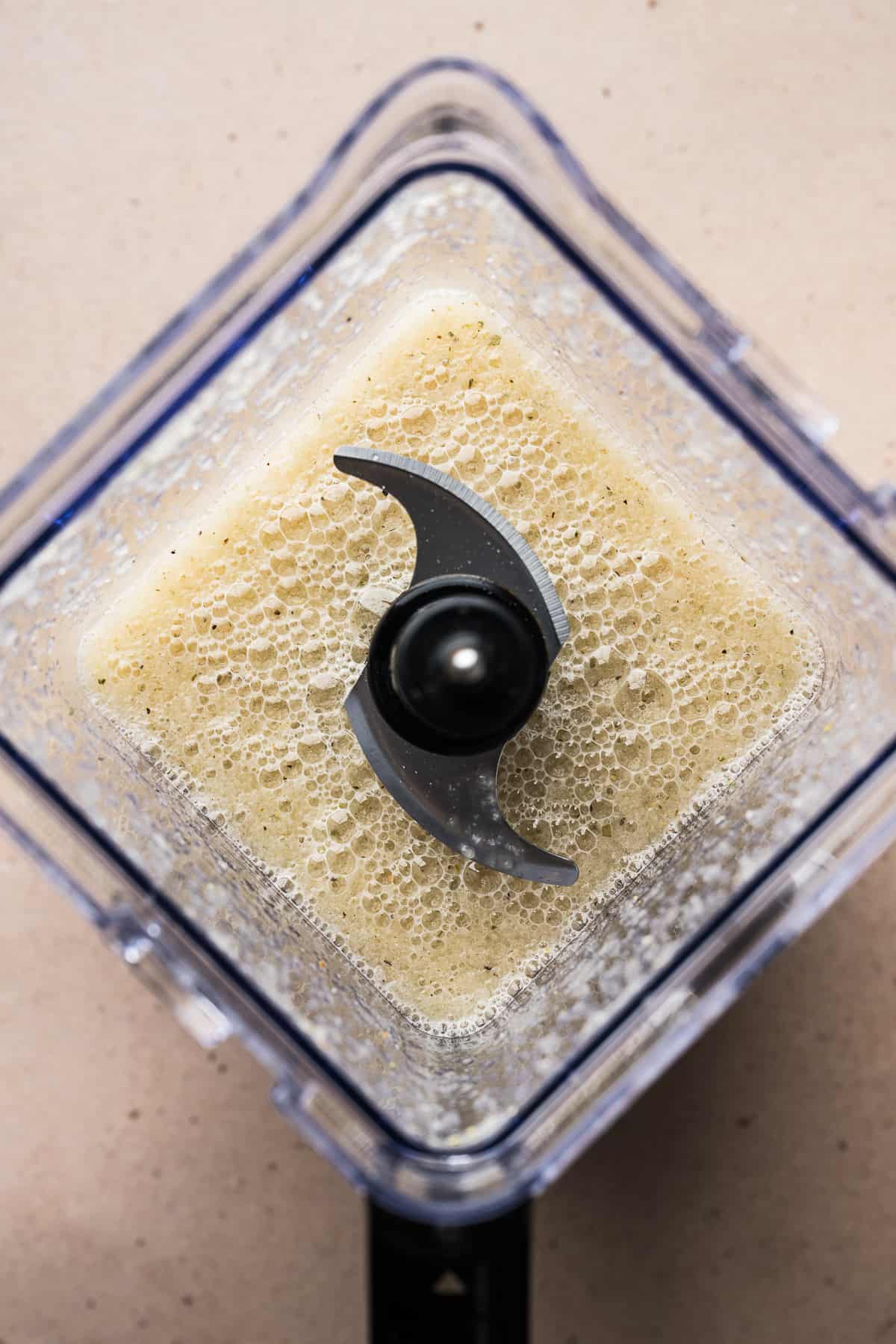
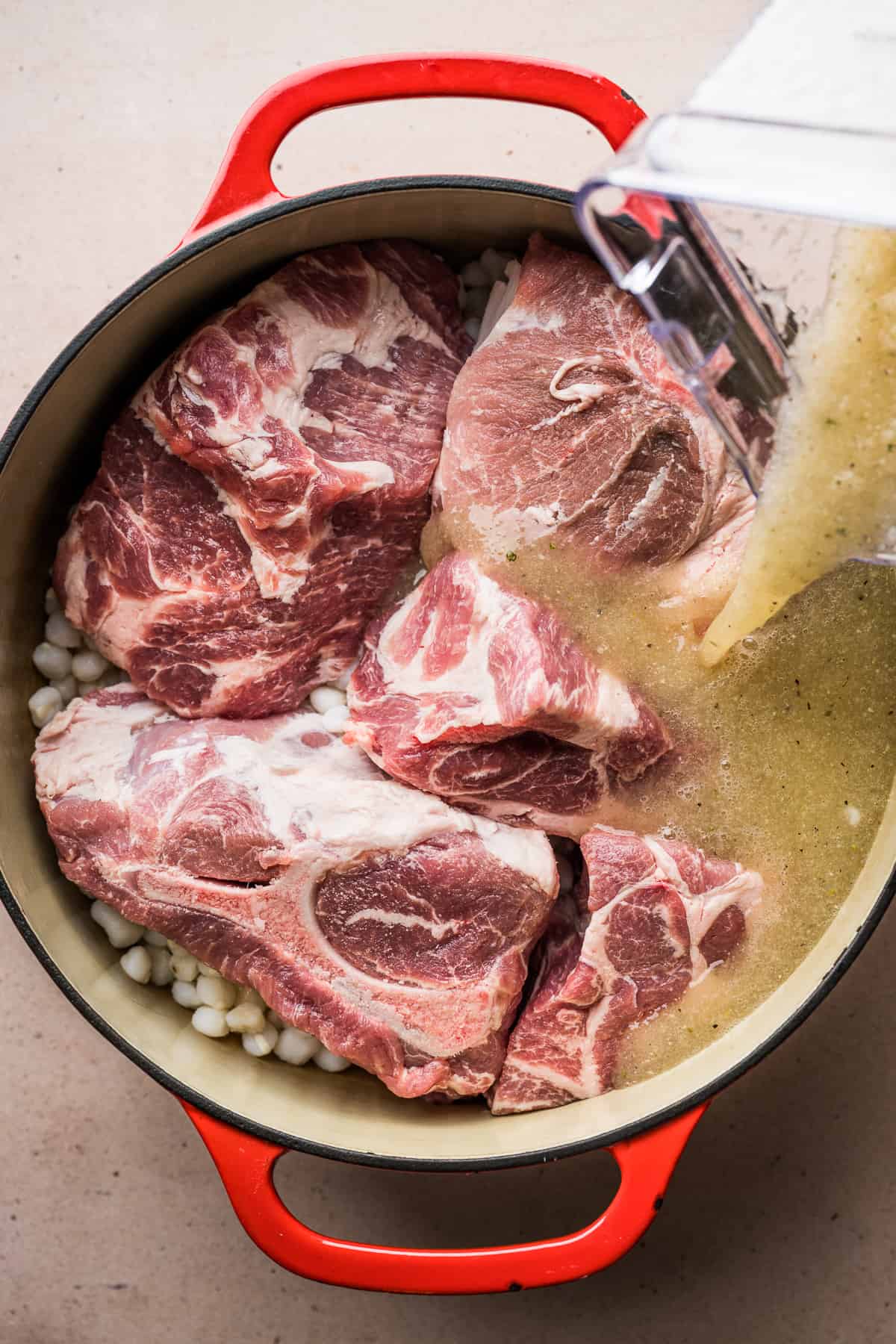
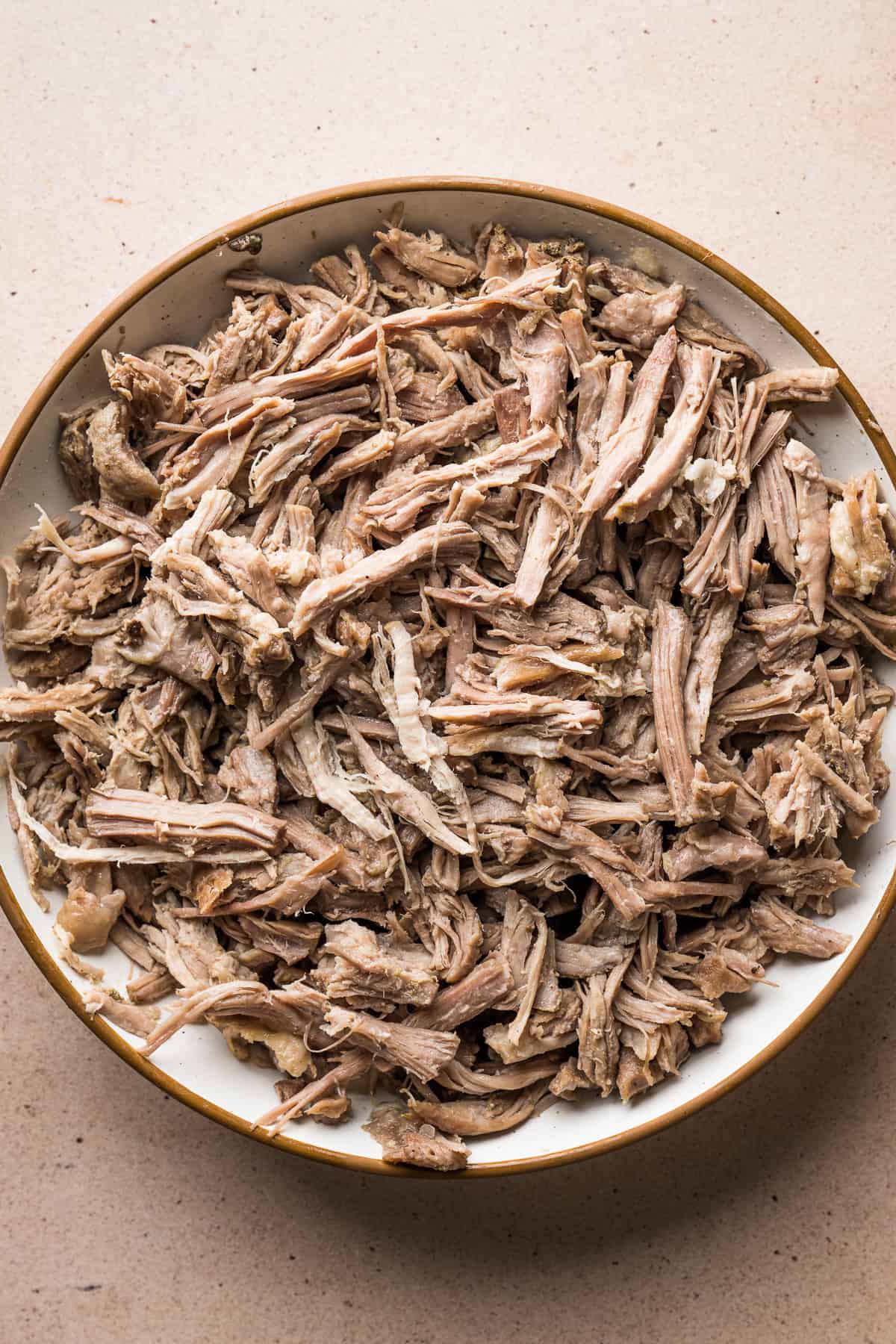
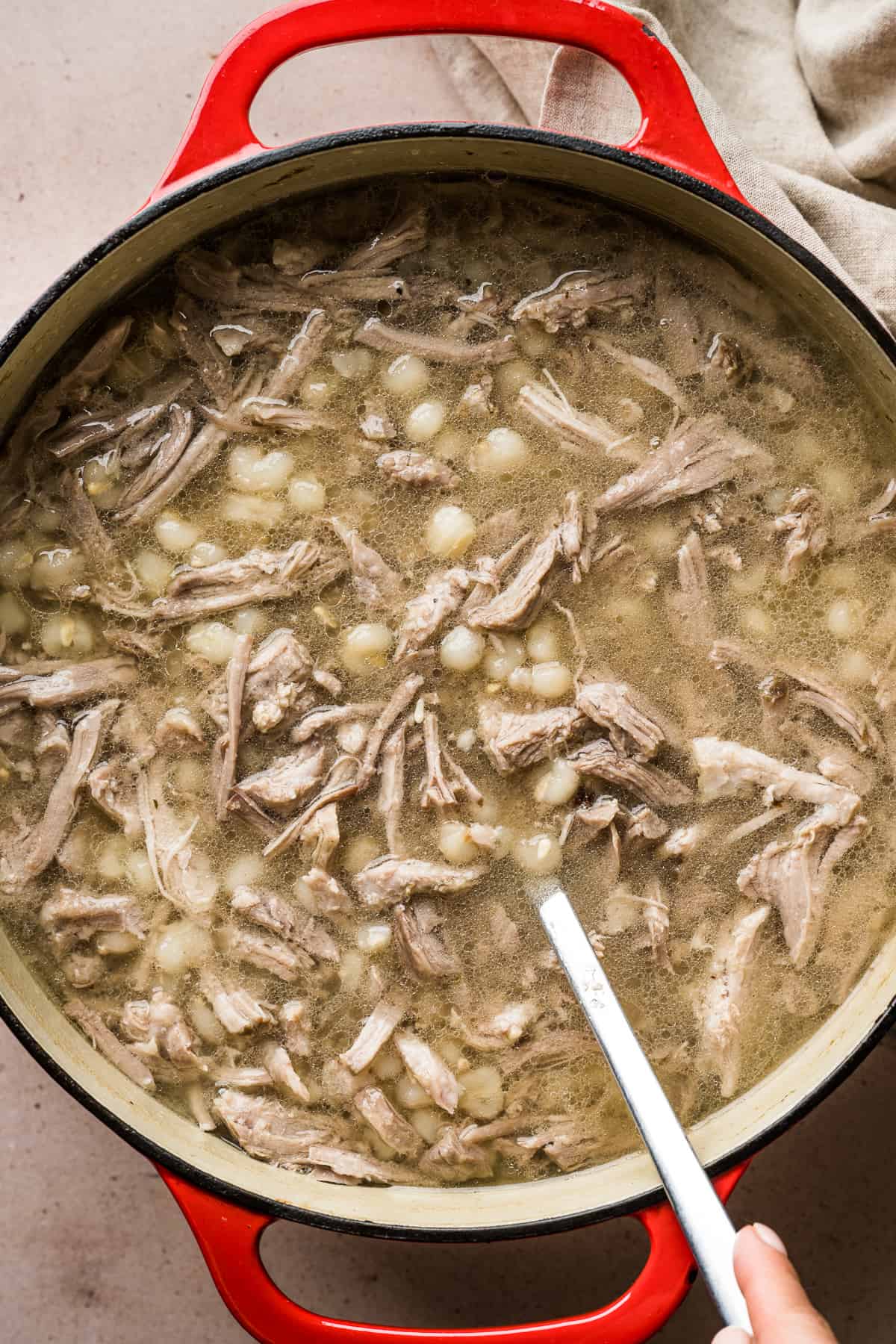
How to Make Pozole Blanco
- Blend: Place the onion, garlic, bay leaves, salt, cumin, black pepper, Mexican oregano, and 2 cups of chicken broth in a large blender, and blend until smooth.
- Cook: In a large pot or Dutch oven, combine the blended onion mixture, pork, hominy, and the remaining 2 cups of broth. Bring everything to a boil over high heat, reduce the heat to low, cover, and simmer for 3 hours or until the pork is fall-apart tender.
- Shred: Remove the pork from the pot and transfer it to a large bowl. Shred it with a fork, then transfer it back into the pot.
- Serve: Serve the pozole in bowls topped with thinly shredded cabbage, cilantro, lime juice, sliced radishes, diced onions, avocados, dried Mexican oregano, and some spicy salsa roja.
Toppings and Garnishes
Once your pozole blanco is ready, it’s time to serve it up! Here are some suggestions for toppings and garnishes to add to your pozole:
- Shredded cabbage
- Sliced radishes
- Avocado
- Chopped onion
- Cilantro
- Lime wedges
You can also serve your pozole with traditional sides and accompaniments, such as tostada shells, corn tortillas, or bolillo bread. You can also add some spice by adding a dash of chile de arbol salsa or salsa verde.
Storage
Pozole blanco can be stored in an airtight container in the fridge for up to 1 week.
To reheat, warm it up in a pot on the stove over medium-high heat for about 10 minutes, or in the microwave for 5 minutes.
Frequently Asked Questions
What are the 3 types of pozole?
Pozole has three popular variations: pozole rojo, pozole verde, and pozole blanco. Each has its own unique flavor based on the chiles used in the broth. Rojo is typically made with a combination of guajillo, ancho, and arbol. Verde is made with jalapeños, poblanos, and serranos. Blanco is made with no chiles at all!
What is pozole blanco in English?
Pozole Blanco translates to White Pozole. This name comes from the color of the broth in comparison to Pozole Rojo with a rich red broth, and Pozole Verde with a bright and citrusy green broth.
More Mexican Recipes
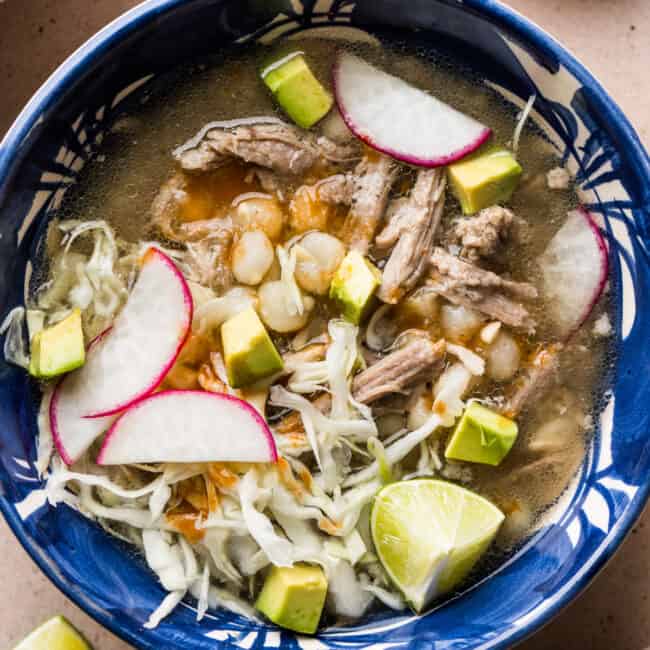
Pozole Blanco
Ingredients
For the pozole
- 1 large white onion, halved
- 8 cloves garlic
- 2 bay leaves
- 1 ½ tablespoon kosher salt, plus more as needed
- 1 teaspoon ground cumin
- ½ teaspoon freshly ground black pepper
- ½ teaspoon dried Mexican oregano*
- 4 cups chicken broth, divided
- 4 to 5 pounds bone-in pork shoulder, cut into large chunks
- 4 (15-ounce) cans white hominy*, drained and rinsed
For serving
- Thinly shredded cabbage
- avocado
- Diced onions
- Lime wedges
- Sliced radishes
- chopped cilantro
- Spicy salsa
Instructions
- Add the onion, garlic, bay leaves, salt, cumin, black pepper, Mexican oregano, and 2 cups of chicken broth to a large blender. Blend until smooth.
- In a large pot or Dutch oven, combine the blended onion mixture, pork, hominy, and the remaining 2 cups of broth. Bring to a boil over high heat, reduce heat to low, cover, and simmer for 3 hours or until the pork is fall-apart tender.
- Remove the pork from the pot and transfer it to a large bowl. Shred it with a fork or tongs (it should fall apart very easily), then transfer it back into the pot.
- Serve the pozole in bowls topped with thinly shredded cabbage, cilantro, lime juice, sliced radishes, diced onions, avocados, dried Mexican oregano, and some spicy salsa roja.
Notes
- Mexican oregano: If you don’t have Mexican oregano, you can use regular oregano instead. It will have a slightly different flavor, but the dish will still be delicious.
- Hominy: If you can’t find white hominy, you can use yellow hominy instead.
- Meat: This dish is traditionally made with pork, but if you prefer chicken, I recommend using bone-in chicken thighs. The cooking time will also be much shorter, and you only need to cook it for about 30 minutes once it boils, until the chicken is cooked through.
Nutrition
Nutrition information is automatically calculated, so should only be used as an approximation.

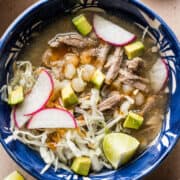
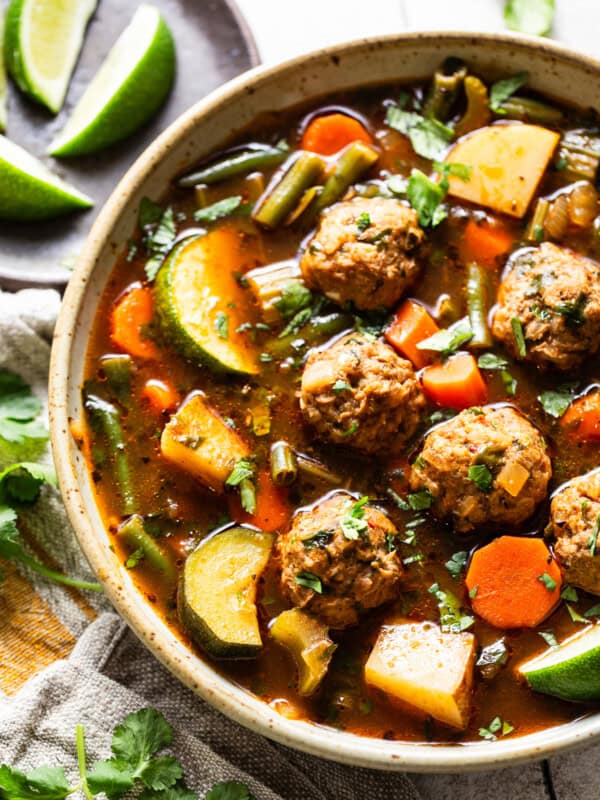
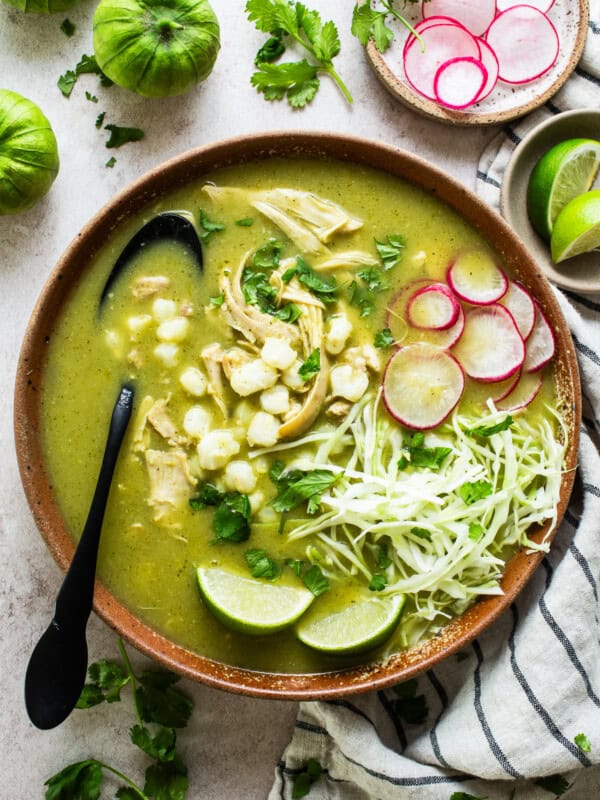
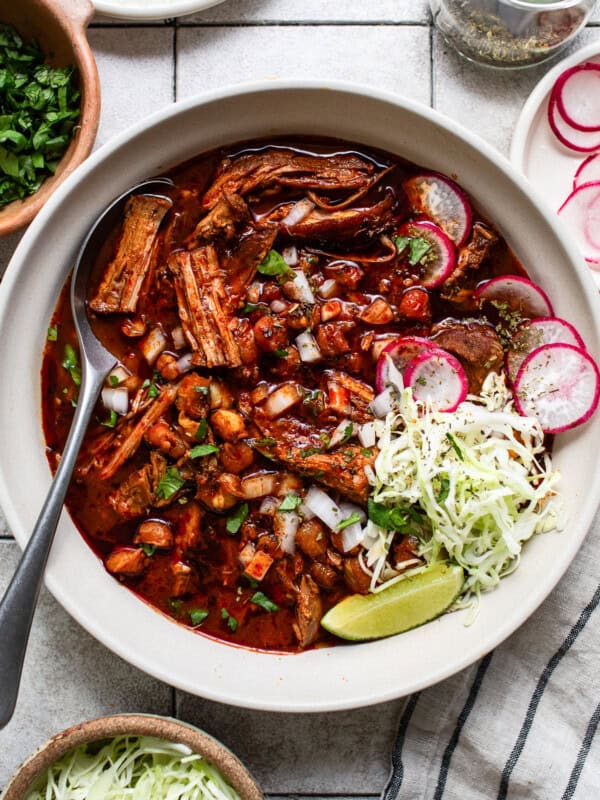










Wow! My husband and I made this a few days ago. It’s DELICIOUS! We will make it again. Not that much work either. It’s the first Isabella Eats recipe we’ve made! Thank you!
I made this today, and it was delicious. The broth was so flavorful! Thanks for an easy posole recipe.
Very appetizing and delicious. I used chicken instead of pork. Thanks for sharing Isabel.
wow I was taught to boil everything together, but blending up the vegetables and seasonings first, then cooking with the pork and hominy made SUCH a difference in depth of flavor !! Will always make it this way now, thank you. And my favorite garnishes were always some pickled onion, cilantro and crushed oregano. Takes me back to my childhood 😊
This was DELICIOUS!!! I used pork shoulder and since mine was frozen I cooked it for 15 minutes in my Instapot! Yum yum yum!!! Thanks so much for posting this recipe. It will definitely be added to those i frequently use! 😍
Thank you Tammy!